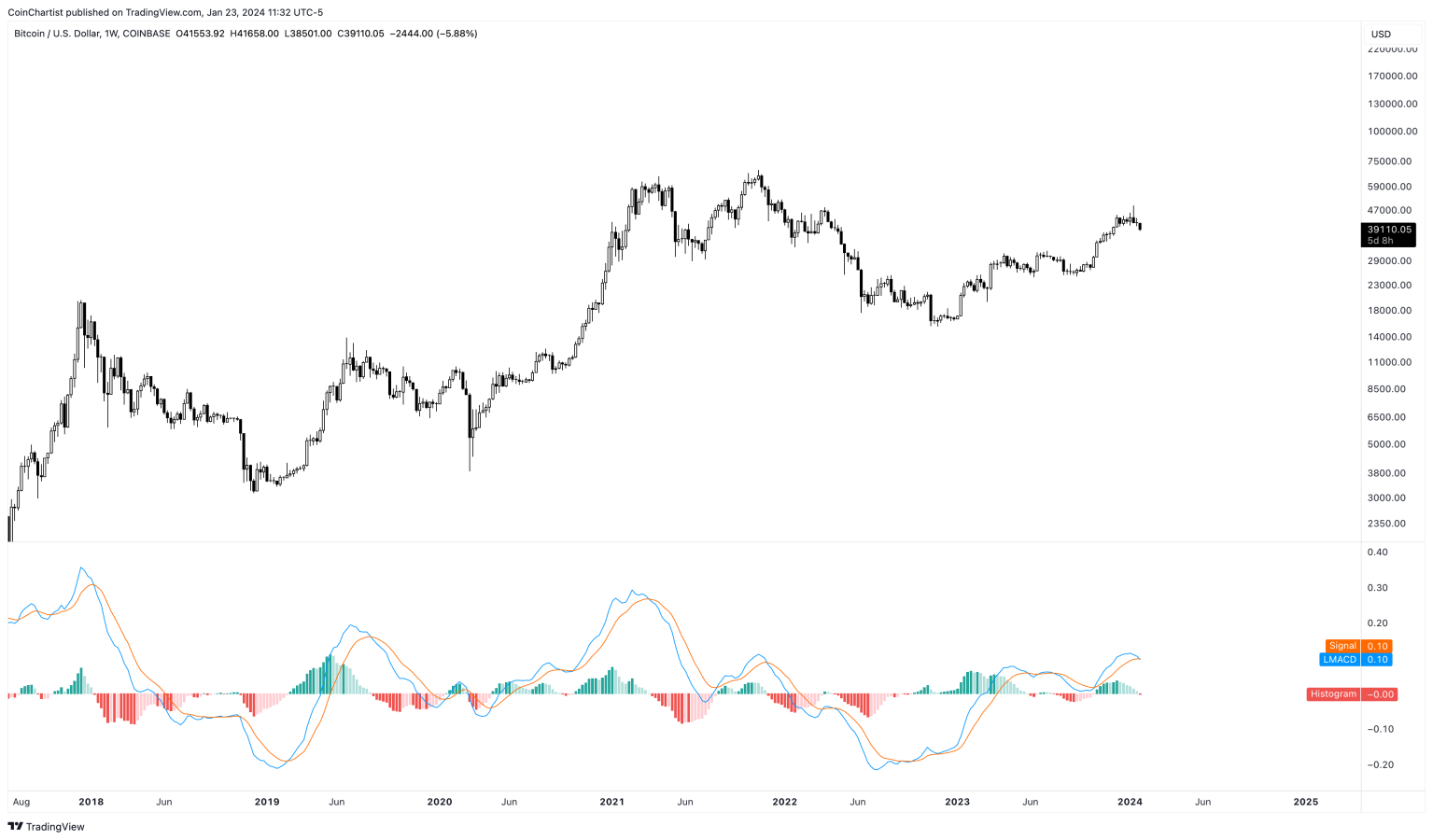Bitcoin's Recent Dip Below $39,000: What Does Future Hold?
Bitcoin's recent plunge below $39,000 has demonstrated a continuity of its decline, causing concerns and inciting a thorough look at the factors altering its price movements. According to CoinGecko, on Tuesday, Bitcoin was priced at $38,927, representing a 4.3% drop from the previous day and a 9% decline compared to last week.

"The outflow from GBTC should not matter that much as bitcoin's inflow into other ETFs have offset the outflow by $1.2 billion so far. It seems that the seemingly large amount of daily outflows from GBTC is affecting the market in a psychological way," said Yuya Hasegawa, a crypto market analyst at Japanese bitcoin exchange Bitbank.
The leading factor behind Bitcoin's current downfall can be linked to the aftermath of Bitcoin ETF share selloffs, particularly from the Grayscale Bitcoin Trust (GBTC). On Jan. 10, GBTC had $28 billion in AUM (Assets under Management), but Tuesday morning showed a $6 billion worth of redemptions in the fund. This led Grayscale to sell the Bitcoin that backed the redeemed shares, putting pressure on the market to sell.
Interestingly, one fund's loss became other funds' gain. The iShares Bitcoin Trust (IBIT)—BlackRock's BTC offering—accumulated more than $1 billion AUM within a week.
The effect of Bitcoin's decline extended to the crypto market as well. Tokens like ORDI and SATS endured a 12% and 16% price decrease since Monday. Popular altcoins, including Solana (SOL), Optimism (OP), and Avalanche (AVAX), also experienced declines, highlighting the interconnected nature of the crypto market.
This also caused the weekly LMACD to cross bearish. Historical evidence shows bearish crossovers on the weekly LMACD around significant market peaks, such as the 2018 peak, the 2019 rally, and both 2021 double tops. However, in the past, there were records where Bitcoin crossed bearish but returned to a bullish trend later, such as in 2023 and late 2020.
Traders and analysts are continuously monitoring key support levels, with $36,000 deemed as a critical level in the near term. Despite all these challenges, some chart experts hold optimism, indicating that a new record high for Bitcoin is still possible within the year.

© Copyright IBTimes 2025. All rights reserved.






















